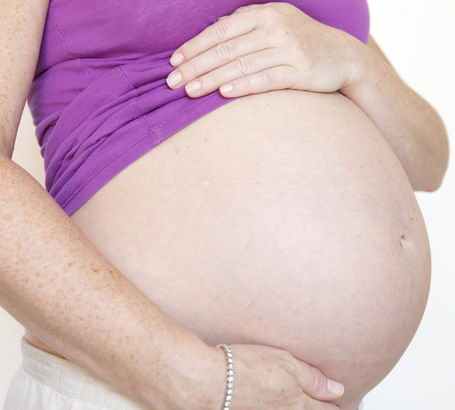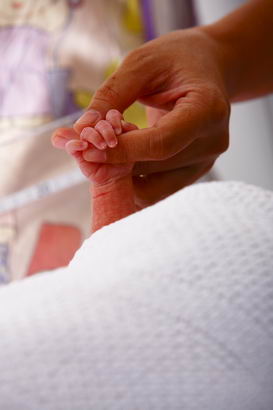
A baby's prenatal development starts at conception and continues through to birth. Its activities in the womb prepare it for life after birth.
A baby in the womb is not sealed off from the wider environment, but is affected by and responds to a range of different things. It can be damaged by infections and toxins (eg alcohol, nicotine), and towards the end of pregnancy, the baby learns from stimulation from outside the womb (Hepper, 2007).
Development during the period is an interaction between genes and environment.
The fetus is an active participant in its own development. Its behaviour is important for progressing normal development within
the womb and its life in the postnatal world. It is the foundation on which all future development after birth is built.
Hepper, 2007

There are three periods of development of a baby during a nine-month pregnancy:
- Conceptual period: 0-2 weeks: an egg is fertilised by a sperm, the cells multiply and divide, and become embedded in the uterus.
- Embryonic period: 3-8 weeks: the major organs are developed during this period. At this stage, the developing baby is most vulnerable to infections and toxins.
- Foetal period: 9 weeks-birth: very few new structures appear; motor, sensory and learning behaviours begin.
(Hepper, 2007)
Although most pregnancies are successful, babies can be damaged in the womb, in some cases leading to lifelong difficulties and disabilities. Although some causes cannot be avoided, others can be.
Causes of damage via the mother include:
- Environmental hazards (eg radiation, heavy metals);
- Infections and diseases;
- Poor nutrition;
- Social (eg alcohol, nicotine), prescription or illegal drugs;
- Prolonged stress or anxiety.
Take a look at an Interactive Prenatal Development Timeline.
Research suggests that the foetus begins to learn in the womb at 24 weeks old.
At week 25, the foetus responds to sounds with heart-rate changes and movements.
At weeks 32-33, the foetus senses the difference between familiar and unfamiliar sounds.
From their experiences in the womb, babies
can remember:
- Their mother's heartbeats;
- The smell of amniotic fluid;
- Stories read by their mother;
- Pieces of music.
(Bee and Boyd, 2010)
Primitive reflexes develop in the womb and are involuntary movements in response to a stimulus. These reflexes protect the baby and help it to survive within the womb, at birth and even after birth. Some disappear four to six months after birth, while others may form the foundation of later voluntary movement.
If these reflexes are weak, or continue beyond the time of expected disappearance, they may indicate a neurodevelopmental difficulty (eg cerebral palsy).
The Institute for Neuro-Phsyiological Psychology has information relating to early reflexes in relation to learning difficulties and neurodevelopmental delay.

Bee, H. and Boyd, D. (2010) The Developing Child (12th edition). London: Allyn and Bacon.
Hepper, P. (2007) Prenatal development, in: A. Slater and M. Lewis (eds) Introduction to Infant Development (2nd edition). Oxford: Oxford University Press.